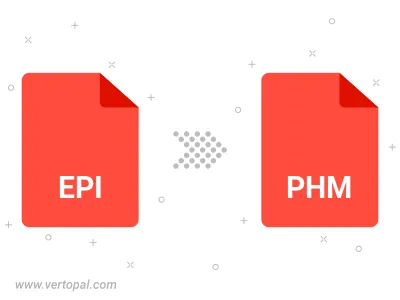Convert EPI to PHM
Convert EPI images to PHM format, edit and optimize images online and free.

The EPI file extension stands for Encapsulated PostScript Interchange, a format developed by Adobe in the late 1980s. It facilitates the integration of vector graphics and text into documents for high-resolution printing. EPI files, a variant of EPS, are primarily used in graphic design and desktop publishing to ensure consistent and scalable image quality. This format employs Adobe's PostScript language to describe the appearance of a single page, making it ideal for embedding illustrations in various documents.
The PHM file extension stands for Portable Float-map Image (16-bit half), a format used for storing High Dynamic Range (HDR) images with 16-bit half-precision floating-point values. This format is particularly useful in applications requiring precise color representation and extensive dynamic range, such as computer graphics, image processing, and scientific visualization. Originating from the Portable FloatMap (PFM) format, PHM was developed to provide a more efficient storage solution by utilizing half-precision floats, thereby reducing file size while maintaining significant detail and accuracy.
Click the Choose File button to select the EPI file.
Pick any EPI to PHM tools if you need to edit your EPI file, then click the Convert button.
Once the convert is complete, you can download the final PHM file.

To change EPI format to PHM, upload your EPI file to proceed to the preview page. Use any available tools if you want to edit and manipulate your EPI file. Click on the convert button and wait for the convert to complete. Download the converted PHM file afterward.
Follow steps below if you have installed Vertopal CLI on your macOS system.
cd to EPI file location or include path to your input file.Follow steps below if you have installed Vertopal CLI on your Windows system.
cd to EPI file location or include path to your input file.Follow steps below if you have installed Vertopal CLI on your Linux system.
cd to EPI file location or include path to your input file.